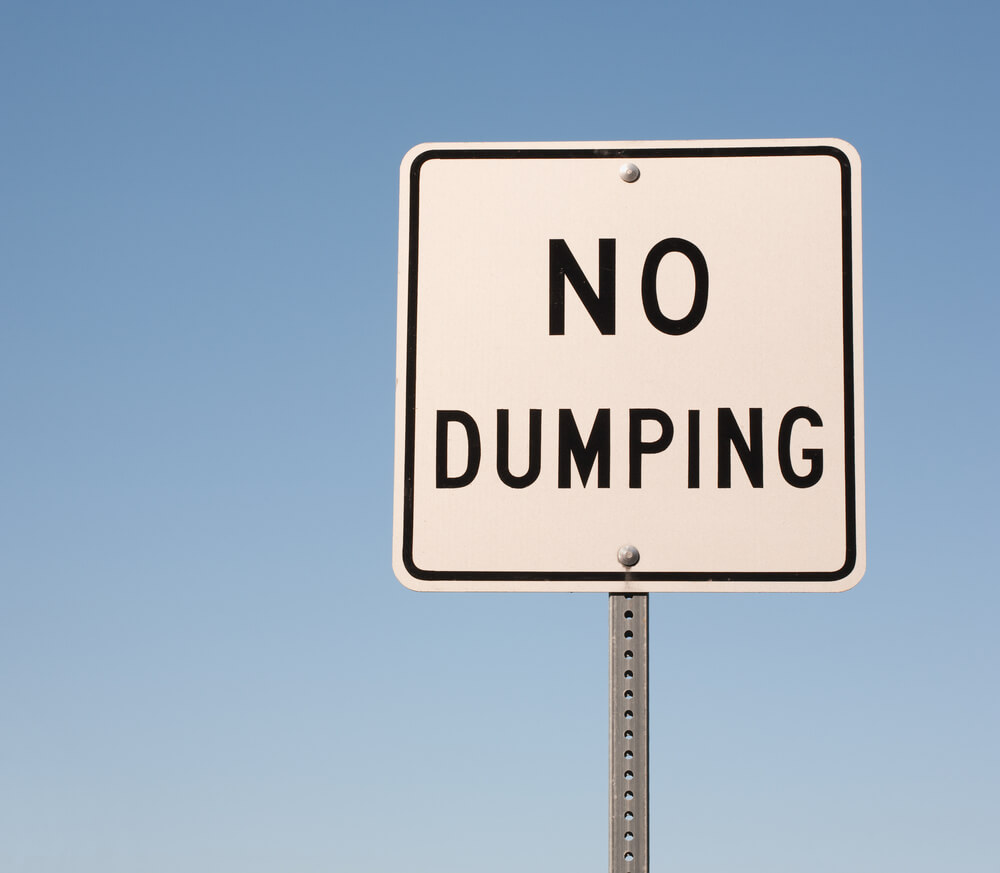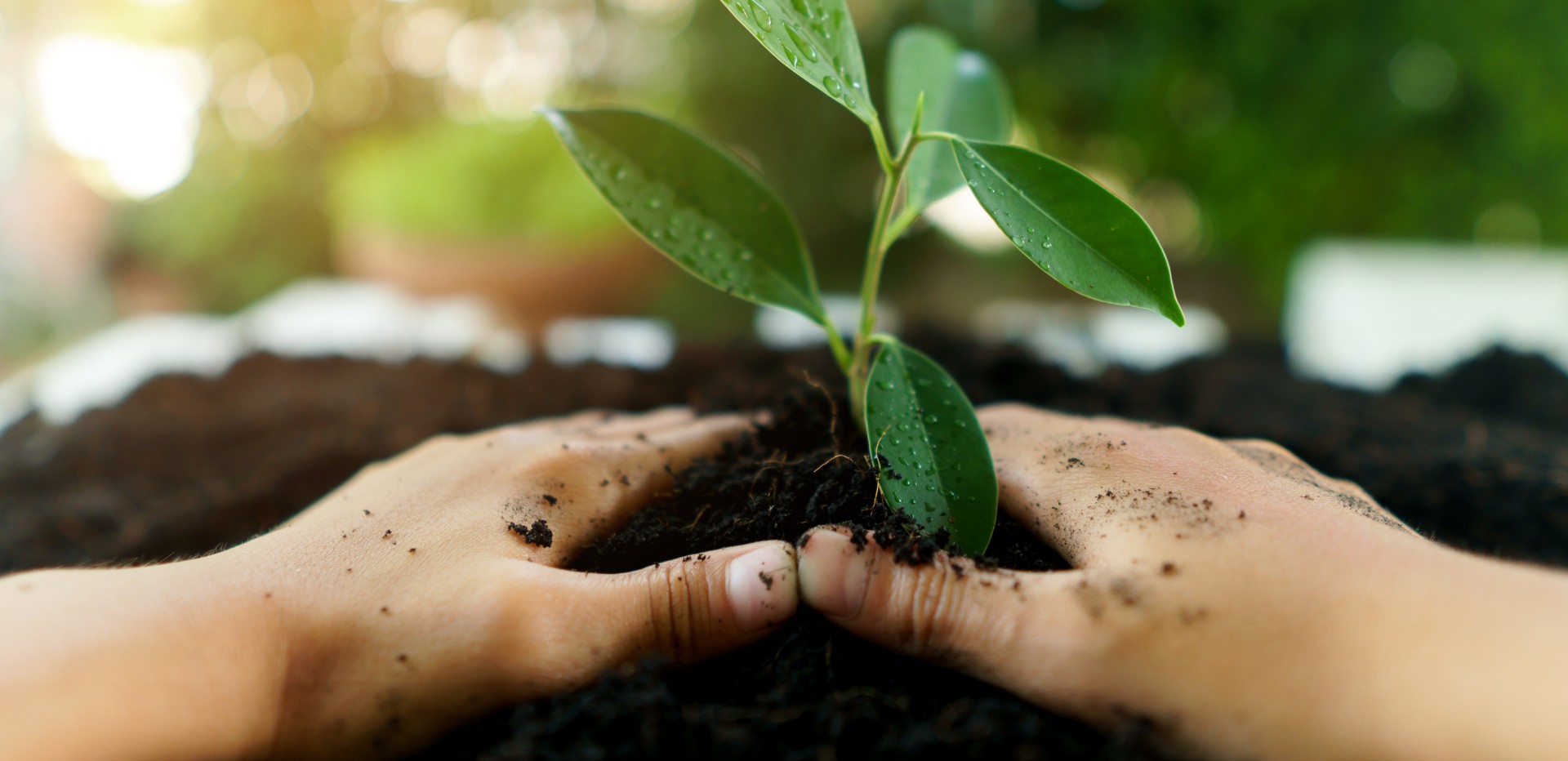As we move toward the end of the first month of 2020, many of us are thinking of our resolutions. Maybe some have already been broken, or maybe you’re looking for a new resolution. Either way, we’re here to help!
Not only is it a new year, but a new decade, and it’s a great time to think about resolutions that not only improve our lives as individuals but also help the world around us as well. To help you get started on thinking about environmentally-friendly resolutions, here are six sustainable suggestions for resolutions you can truly feel good about.
1. Cook from scratch
The convenient food we buy can come with an unintended environmental impact. From the additions of sweeteners and preservatives to packaging to shipping consequences, processed food can generate vast quantities of environmental waste. Additionally, processed and unnatural foods contain little to no nutrition that our bodies can use.
To combat the environmental implications of fast foods, try to switch your eating habits from buying pre-made foods to cooking from scratch. Batch-making or meal prepping are great ways to ensure you have ready-made foods throughout the week.
Meal prepping involves planning your meals for the whole week and shopping accordingly. Batch cooking refers to cooking your food for the week in advance, then freezing them in batches so they will be ready to eat when you need them.
The food we make at home is healthier than the food we buy out because we know what ingredients are put in and can take anything out that we don’t want to use. It also cuts down on waste from packaging and transportation, which means we eat cleaner and make our environment cleaner as well.
2. Try plant-based meals
The livestock industry, which raises and processes animal and animal products for human consumption, is responsible for more greenhouse gases than all cars, planes, trains, and ships combined. Livestock-related deforestation and related practices contribute to roughly 18% of all global greenhouse gas emissions. With the rising demand for livestock, animal waste can also leak into the local water supply and spreads harmful bacteria to those living in surrounding areas.
Raising livestock requires vast amounts of land and water. It also increases deforestation, particularly of the Amazon rainforest, which plays a crucial role in pulling out greenhouse gases from the atmosphere.
Research estimates switching to a “flexitarian” diet – or a diet that only occasionally eats meat – can cut greenhouse gases by 56%. Consider a Meatless Monday or a flexitarian diet to help reduce greenhouse gases.
3. Compost your food waste
Food waste that is sent to the landfill is incredibly wasteful. Decomposing food produces methane, a greenhouse gas that is 34 times more potent over a 100-year period than carbon dioxide.
Thankfully, this can all be prevented by using composting methods to repurpose food waste. To get started on composting, make sure that you are not making too much food and when you do, make sure to save and eat your leftovers. Compost the rest of the food waste that is left. For more information on the “why” and “how” of composting, check out our guide for how to start composting at home.
For commercial services, TDS offers composting services that can help reduce food waste on a corporate and business level. Whether it’s a restaurant, a grocery store, cafeterias or even food creators, our professionals can show how you can make use of our composting program.
4. Drive less
This resolution may be harder depending on the city that you live in, but there are a lot of great benefits to driving less. Where possible, consider taking public transportation, carpooling, walking, or biking as a form of transportation as opposed to using your car.
A typical passenger vehicle emits 4.6 metric tons of carbon dioxide per year. Vehicles also produce methane and nitrous oxide, which while in fewer quantities than carbon dioxide, still have a huge impact on our environment.
By driving less either by taking public transportation, carpooling, walking, or biking, you are reducing the amount of carbon dioxide and other gases released into the atmosphere. For every mile not driven, you reduce your carbon footprint by one pound. Even on occasions where you have to drive, consider asking a friend if they want to ride along with you, consider parking farther away from the entrance or disallowing your car from sitting on idle. Letting your car sit idle for more than ten seconds creates more carbon dioxide, uses more fuel and produces more carbon dioxide than restarting the engine.
5. Reduce plastic use
Plastic use is so pervasive in our lives, whether its plastic water bottles, plastic cutlery, plastic straws or plastic bags. Our cleaning and personal care items come in hard plastic, items we buy from the store come wrapped in plastic or are in plastic packaging, food is sometimes packaged in plastic… plastic is everywhere.
In the US alone, 33 million tons of plastic waste per year is generated, and only a fraction of that total amount is recycled. The amount of plastic we use and throw away is a huge problem for our planet’s ecosystem. It ends up in landfills, rivers, oceans, and contributes to a plethora of environmental problems.
An easy and profound way to help cut down on plastic is to utilize reusable shopping bags when we go to stores. While plastic, single-use bags may be convenient for fifteen to twenty minutes, these plastic bags may have a lifespan of 500-1,000 years. Invest in some cloth or heavy-duty reusable shopping bags, then place them in your car, in your purse, in your desk at work, in easily accessible places at home. This will help reduce your plastic waste!
Another way to reduce plastic waste is to stop buying bottled water. Approximately 17 million barrels of oil are used every year to produce plastic water bottles, a majority of which then end up in the trash. Instead of buying plastic water bottles, carry a reusable water bottle and use a water filter at home.
You can do the same with cutlery and straws as well! Invest in transportable metal cutlery you can take with you anywhere. This durable utensil kit will cut down on your need for single-use plastics as well when you eat away from home!
6. Start recycling
Recycling is one of the best ways to create a positive impact on our planet. Recycling and responsible resource management are immensely important, especially as the world population continues to grow. More people means more waste, and as we progress technologically, it can mean new products that we are creating are not biodegradable.
A key benefit of recycling is that it can save space in landfills. Land will continue to be stuffed with non-biodegradable materials, such as mixed materials and contaminated waste, so it is imperative to recycle anything that’s recyclable to keep it out of the waste stream.
There are benefits to recycling beyond waste stream prevention as well. Recycling paper products also reduces how many trees are cut down. A large number of trees are cut down to make paper goods, so by recycling paper, fewer trees need to be chopped for processing.
The same process applies to metals, such as aluminum, tin, and steel. Because of metal’s molecular makeup, that material can be reused over and over indefinitely, making it one of the most recyclable products on earth. You can also find metals in your electronic goods – read our post to see how to recycle those TVs, computers and consumer electronics correctly. By recycling those metals, you can theoretically keep metal waste out of the landfill forever!
If you want to learn more about proper recycling, check out the TDS Waste Wizard to learn what is and is not recyclable.
In this new decade, it’s important that we care for ourselves, but it is equally important that we take steps to care for our planet as well. With small steps throughout our day, we can make a bigger combined impact for the betterment of our planet!



